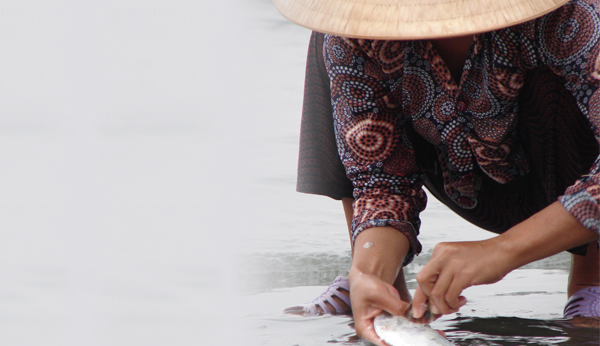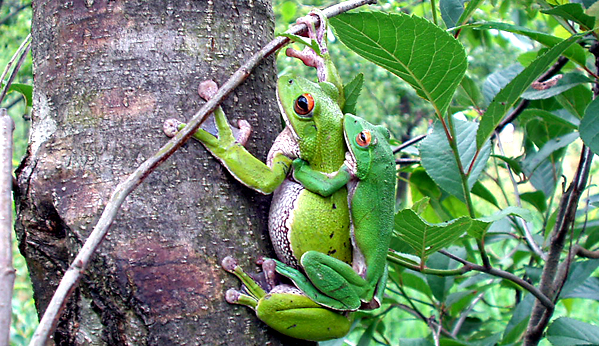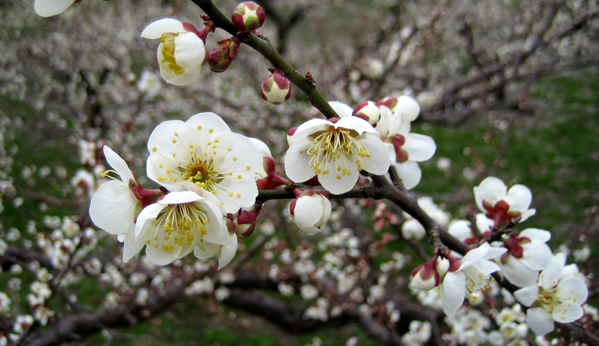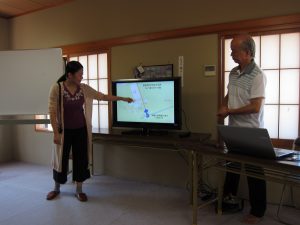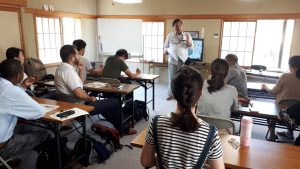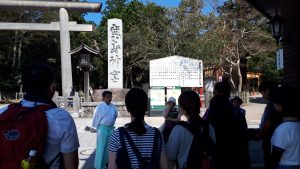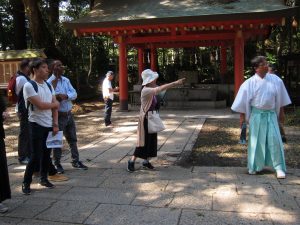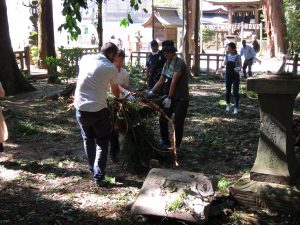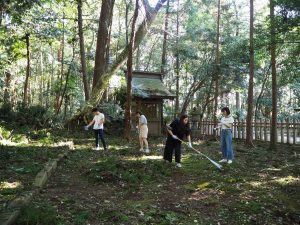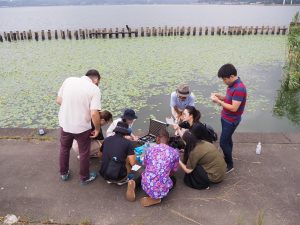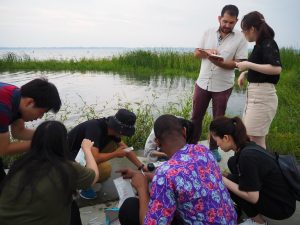Field Trip to Kashima-Kasumigaura Lake
On September 10th and 11th, 2019, 9 students and 2 faculty members conducted environmental field trip to Kashima Jingu Shrine, Kashima City, Ibaraki Prefecture, and Lake Kasumigaura (Hokota City and Tsuchiura City). As a humongous typhoon hit eastern Kanto area the day before we departed, we had a strong concern about the restoration of the electric power supply to the destinations and accommodations. However, the trip program was implemented almost as planned, and the trip had a high yield.
At the local private museum (Kokoshika) on the shrine's approach, we asked Mr. Okawa, the director of the museum, about the history and origins of Kashima Jingu (Photo 1). Another expert explained about the vegetation of the shrine forest (Chinju no Mori), which is also a preserve of primeval vegetation (Photo 2).
In addition, Mr. Sato from the Kajima Jingu, Public Relations Division, gave us a more detailed explanation on the history and structure of the tori gate and the main shrine (Photos 3, 4). Unfortunately, some shrine trees fell down due to the typhoon, and there was a risk that the branches would fall, so we could not visit the shrine forest behind the main shrine establishments. We offered to clean the side of the main shrine where branches such as cedar were scattered (Photos 5, 6).
In the evening, we discussed the relationship between nature conservation and religious ethics, especially Shinto values originated from non-monotheistic nature worship, in the accommodation meeting room.
On the next day, we visited the conservation area of Asaza (Water Lily) on the shore of Lake Kasumigaura (Kitaura) to observe the reclaimed land for the protection of endangered Asaza (an aquatic plant) and practiced water quality measurement (Photos 7). Asaza was reported to have been extinct from Kasumigaura last year, but a relatively large colony was preserved in this protected area, and on the day we visited, pretty yellow flowers bloomed.
We also visited the Kasumigaura Environmental Research Center on the shore of Lake Kasumigaura (Nishiura). The experts from the Research Center and the Kasumigaura River Office of the Ministry of Land, Infrastructure, Transport and Tourism gave us lectures on the history of Kasumigaura, changes in water quality, and efforts to improve it. In addition, we entered one tip of the reclaimed area (lake shore) and practiced water quality measurement (Photos 8).

